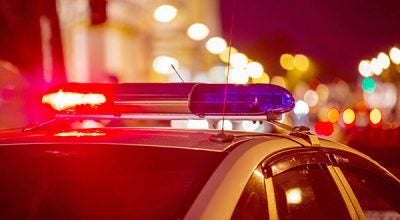Wagels toured Russia
Published 11:36 am Monday, May 13, 2013
County Commissioner Robert Wagel fished off a pier in Russia.
Anyone who caught a fish got a shot of vodka.
He didn’t land any fish, “but I got a shot anyway.”
Wagel’s tour also included a home visit with pastries and tea and a music school.
“The only thing in front of the stateroom we were in was the bar,” Wagel, Dowagiac Rotary Club president, told fellow Rotarians Thursday noon at Elks Lodge 889.
Wagel and his wife, Jane, traveled for their 20-day trip aboard the m.s. Rossia, a three-propeller passenger ship built in Germany in 1978. It was a vessel of welded steel construction, with propulsion provided by three main diesel engines driving each shaft. Five rudders were mounted at the stern.
Four main generators driven by diesel engines power the 125-meter-long vessel and its electrical systems. For mooring, there are seven electric winches.
“The ship is owned by Grand Circle Cruise Line, but Russians crew it,” he said.
There were 170 people aboard divided into groups of 35 for bus sightseeing.
Before a voyage begins, “You have a piece of bread and dip it in salt.”
They flew 9 1/2 hours from New York to Moscow. “We just kind of walked in to Russia, but it took four hours getting out,” Wagel said.
Moscow, founded in 1147, is home to 11 million people.
“They have a problem with traffic jams,” Wagel said, “so you’ve got to start early. Russians stop in the middle of the street while they shop, so you have to go around. A visa costs $220.” Expect to pay $5,000 per person for the trip.
Wagel boarded the boat in a parka last October and bought a rabbit fur hat because Russia is at the same latitude as Alaska and Greenland.
“They had a big snowstorm the week after we left,” he said.
The Wagels visited the Kremlin (“fortress”), an historic complex in the heart of Moscow that includes five palaces, four cathedrals and the enclosing red wall 10 feet thick with towers.
It serves as the official residence of President Vladimir Putin.
Within the wall tourists photograph a huge cannon and enormous bell.
Wagel’s photographs show the GUM department store lit up at night, Moscow University, the Tomb of the Unknown Soldier for World War II casualties guarded by a sentry in Alexander Garden and ornate architecture of the immaculate, graffiti-free subway. “The escalators go like gangbusters. You better be ready.”
“You couldn’t go into the Kremlin until five or six years ago,” Wagel said. “People get married there. There are usually two ceremonies. One is civil, one in church.”
Trees draped with locks symbolize vows will endure forever, with keys tossed in the nearby river.
“We only saw two statues of Lenin” — one in the subway and one in Estonia.
“If you’re riding on the subway and you’re standing up, and there’s a young person sitting, they’re expected to get up and offer you their seat, or they’ll get criticized,” Wagel said. “They start learning English in second grade. We visited a fourth grade classroom in a K-12 boarding school which specialized in music.”
A girl drew them a picture, “I love Amerika.”
Apartment buildings are heated with steam piped in from a nearby plant.
St. Petersburg, the cultural capital, has The Hermitage, formerly home to tsars.
The five buildings house one of the finest art collections in the world.
“There’s so much art, it would take 11 years if you paused 10 seconds with each piece,” Wagel said.
St. Petersburg features a number of spectacular fountains spewing water piped from a swamp two miles away. “Peter the Great designed all of this in the early 1700s,” Wagel said. “There are 42 islands with something like 400 bridges.”
Russia’s flag, adopted in 1991, displays bands of white, blue and red.
Its monetary unit is the ruble, divided into 100 kopeks.






